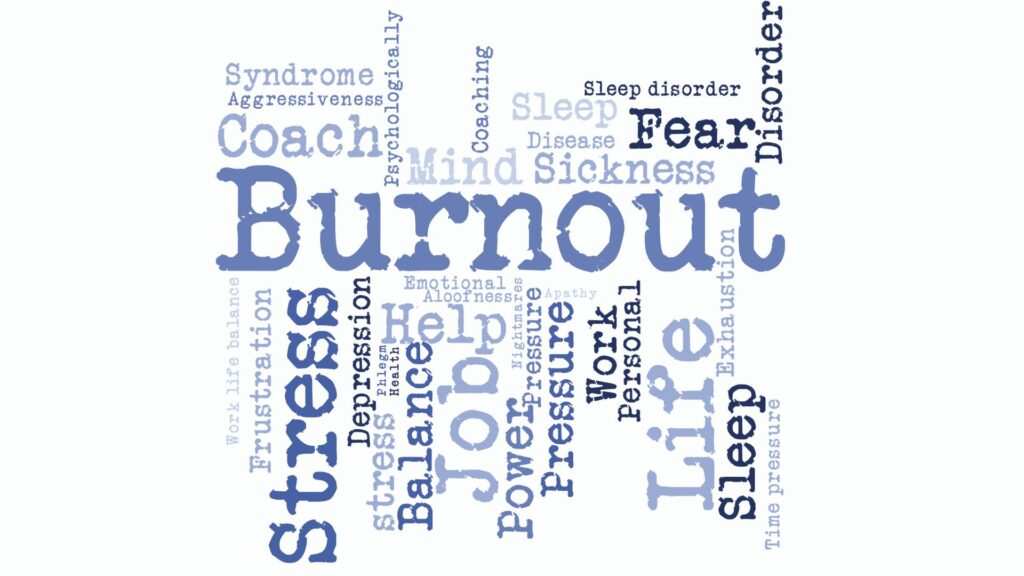
In 1974, psychologist Herbert Freudenberger coined the term “burnout” to describe severe physical and mental exhaustion caused by chronic work stress. He identified behavioral signs of frustration, anger, cynicism, and depression. Particularly susceptible were individuals with a “committed” personality type—specifically medical providers at a New York City clinic. He concluded that burnout was most prevalent in professions requiring high emotional labor, such as healthcare, social work, and education, characterized by low pay and challenging working conditions (Freudenberger, 1974).
In today’s multi-generational post-pandemic workforce, we find that burnout has become epidemic in many professions and industries. Statistics from Fiverr International Ltd. (2023) show that leaders, employees, and organizations alike are paying attention to the issue and are looking for solutions:
- 85% of Bosses recognize that we are experiencing an employee burnout crisis and are concerned that, as a result, we may face challenges in retaining talent in 2024. This concern is not without good reason; among employees who have some work-life balance or who are struggling, 65% said they would consider leaving their employer if their work-life balance does not improve.
- Over half (54%) of workers surveyed said they experienced burnout or mental health challenges due to work in the past year. This percentage was even higher in industries such as Finance (58%) and IT (55%).
- Meanwhile, 40% of employees saidthat their company either doesn’t offer employee mental health/wellbeing benefits or they are not aware of them. However, nearly half of workers surveyed (47%) said improving their mental health/well-being was a priority for their career heading into 2024.
Is it Generational?
There is some question as to whether we are dealing with true burnout since, in its purest form, burnout results from chronic or prolonged stressors. Of all generations, Baby Boomers have the lowest incidence of burnout, while Millennials and Gen Z are topping the list. According to a study conducted by Asana (2023), 84% of Gen Zs, 74% of Millennials, and 47% of Baby Boomers report experiencing burnout. Similarly, based on research by McKinsey, 25% of Gen Zs, 13% of Millennials, 13% of Gen Xs, and 8% of Baby Boomers reported feeling emotionally distressed with low levels of well-being (Coe et al., 2022). This might indicate that burnout has less to do with chronic or prolonged societal conditions.
If it’s not burnout, what are upcoming generations experiencing that results in the exhaustion of physical or emotional strength or motivation? We must determine what it is, what’s causing it, and how to improve it.

What Causes Burnout?
Regardless of the label we attach to workers being frustrated, exhausted, depressed, and disengaged, leaders and organizations must take the initiative to alleviate the situation. This initiative requires looking at what’s causing this burnout and finding ways to remedy it.
According to research, burnout may result from several workplace factors.
- Actual Workload –an unmanageable workload, leading to feelings of defeat and disengagement (Workable, 2023).
- Under Challenged –lack of adequate or appropriate challenge and stimulation (Sutton, 2021).
- Neglect –providing little or no training, guidance, or resources to meet the job demands (Workable, 2023).
- Expectation Gap –a disparity that arises when the reality of one’s job does not align with one’s expectations or societal norms around work (pressure) (Workable, 2023).
- Toxic Workplace Culture –a work environment characterized by unhealthy dynamics (Porath, 2019).
How Do We Fix It?
Interestingly enough, even 50 years ago, Freudenberger believed the solution to burnout involved intervening at an organizational level rather than just an individual one. His recommendations included shorter working hours, regular job rotation, frequent supervision, and staff training (4D Human Being, 2019).
Drawing inspiration from Wong and Greenwood’s (2023) discussion about the importance of mental health, safety, community, and organizational culture in the workplace, we believe that the following key elements are foundational to creating a supportive environment. Cultivating these ideas into company culture may help prevent or alleviate employee burnout:
- Belonging. People are looking for belonging, especially post-pandemic and in hybrid or remote work environments:
- Foster collaboration through shared projects and common goals.
- Encourage teamwork to innovate, problem-solve, and learn together.
- Meaning. Individuals are energized, engaged, and motivated by work that feels meaningful and purposeful to them:
- Align passions with responsibilities.
- Highlight how individual contributions support colleagues and the organization’s vision.
- Provide growth opportunities, career pathways, and recognition for each person’s unique contribution.
- Perspective. Having realistic expectations about the nature of work and seeing work as an opportunity to use strengths and express our creativity is essential:
- Redefine work as an avenue for talent expression and community contribution.
- Acknowledge that no job is perfect and manage expectations accordingly.
- Leadership. Investing in leadership development—including emotional intelligence—is a must:
- Offer leader development to improve the work experience.
- Evolve leadership approaches to accommodate hybrid work or new work models.
- Support leaders’ emotional labor for the benefit of all employees.
- Supports. Awareness of individuals needs and limitations and providing support and resources makes a significant impact:
- Ensure policies, practices, and processes for alleviating burnout.
- Distribute work equitably and reasonably.
- Provide comprehensive support through fair wages, benefits, and policies.
KYT Can Help
It is apparent that our current multi-generational workforce is experiencing some level of burnout, and as a result, employee retention, engagement, and productivity are suffering. By helping companies integrate a behavioral awareness system throughout the employee lifecycle, KYT can support organizations in attracting and retaining the best talent, improving engagement and motivation, developing strong leaders, and helping overall company growth—combating burnout and providing an enterprise-wide solution tailored to your business.
References
4D Human Being. (2019, October 17). From burnt out to fired up. Retrieved from https://www.4dhumanbeing.com/from-burnt-out-to-fired-up/
Asana. (2023). The anatomy of work 2023: rise of the connected enterprise. Retrieved from https://asana.com/resources/anatomy-of-work
Coe, E., Cordina, J., Enomoto, K., Jacobson, R., Mei, S., & Seshan, N. (2022, January 14). Addressing the unprecedented behavioral-health challenges facing Generation Z. McKinsey & Company. https://www.mckinsey.com/industries/healthcare/our-insights/addressing-the-unprecedented-behavioral-health-challenges-facing-generation-z
Fiverr International Ltd. (2023, December 13). 85% of bosses recognize an employee burnout crisis, fear challenges retaining talent in 2024. Fiverr. https://www.fiverr.com/news/endofyearresearch2023
Freudenberger, H. J. (1974). Staff burn‐out. Journal of social issues, 30(1), 159–165. https://doi.org/10.1111/j.1540-4560.1974.tb00706.x
Porath, C. (2020, October 20). Burnout from an organizational perspective. Stanford Social Innovation Review. Retrieved from https://ssir.org/articles/entry/burnout_from_an_organizational_perspective
Sutton, J. (2021, April 19). How to prevent burnout in the workplace: 20 strategies. PositivePsychology.com. Retrieved from https://positivepsychology.com/burnout-prevention/
Wong, B. & Greenwood, K. (2023, October 10). The future of mental health at work is safety, community, and a healthy organizational culture. Harvard Business Review. Retrieved from https://hbr.org/2023/10/the-future-of-mental-health-at-work-is-safety-community-and-a-healthy-organizational-culture
Workable. (2023). Employee burnout for employers: costs, causes and cures. Retrieved from https://resources.workable.com/stories-and-insights/employee-burnout


